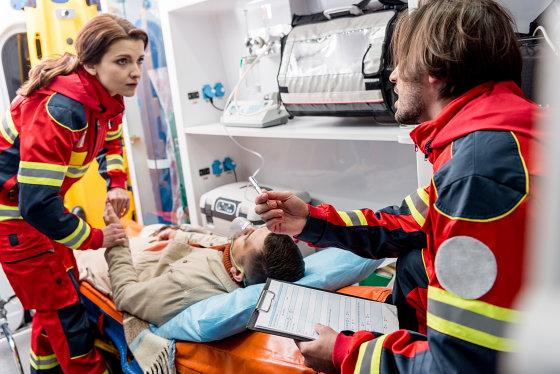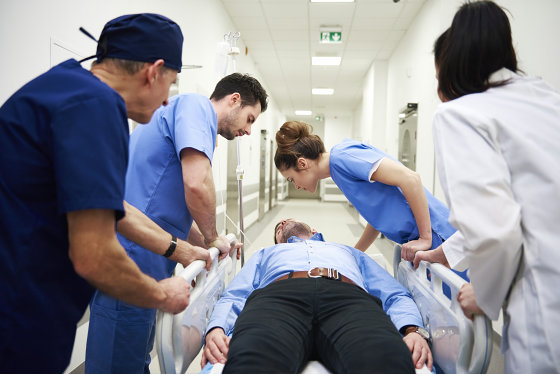Emergency personnel are starting to stop transporting patients who are unlikely to survive

The epidemic of the new coronavirus infection (COVID-19) is particularly severe in the United States, and as of January 6, 2021, 21.1 million people have been infected and 357,000 people have been confirmed dead. In California, where the
LA hospitals can't keep up with COVID-19 surge of illness --Los Angeles Times
https://www.latimes.com/california/story/2021-01-04/los-angeles-hospitals-cannot-keep-up-covid-19-surge-illness
The Los Angeles Times reported that the Los Angeles County Emergency Medical Services Department in California told emergency personnel on January 4, 2021 to 'make oxygen inhalation only for patients with oxygen saturation of 90% or less.' the (PDF file)instruction , and has ordered the oxygen savings. Authorities have also instructed (PDF file) not to transfer patients who are virtually non-survivable to hospitals.
'Patients with virtually no viability' are patients whose heartbeat has stopped, patients who have no signs of breathing, pulse, or blood pressure after resuscitation, or patients who have been declared dead in the field. includes. Prior to the outbreak of COVID-19, hospitals could afford to accept patients, so patients were being transferred even if their viability was low. However, as of January 2021, only patients whose condition has been stabilized by resuscitation will be taken to the hospital.
Medical care in Los Angeles is in dire straits behind these steps. As of January 3, 7988 COVID-19-positive patients were hospitalized in Los Angeles County, 1627 of whom were in the intensive care unit (ICU). The emergency room is full of patients, and patients who have been transported by ambulance may not be able to enter the hospital and may have to wait in the ambulance for eight hours. During this time, the ambulance was unable to transport the patient.

To deal with the situation, authorities devised a temporary 'patient reception space' in front of the emergency room to accommodate patients transported by ambulance. Normally, one patient can have one rescue worker, but in the patient reception space, one rescue worker can see up to four patients.
California has also reportedly sent Army engineers to update the oxygen supply system at an old hospital in Los Angeles County. In addition, it is strengthening support for oxygen use at home so that patients can use the oxygen inhaler outside the hospital.
In addition, management requirements have been relaxed to reduce the burden on hospitals. Patients with a heart attack or stroke do not necessarily have to be hospitalized, but they do need nursing assistance. Dispatching medical staff to out-of-hospital nursing facilities to transfer patients is more efficient than dispatching
All of this is in case of a possible 'worst case' in the future, but a surge in infected people could require more than 1000 beds, making it difficult for Los Angeles County alone to handle. Has been done. It has already been reported that many hospitals are virtually full of ICUs and are forced to treat endangered patients in corridors.

Since the number of tests was small during the year-end and New Year holidays, the increase in the number of infected people is relatively stable, but many people participate in the New Year's Eve party despite the curfew on December 31, 2020. I did . That's why Los Angeles County Public Health Director Barbara Ferrer said, 'January of this year is likely to be the worst situation ever in this pandemic, unimaginable.'
'It's important to remember that the community is so prevalent that you are at risk whenever you leave home. Invisible lethal viruses are ubiquitous and looking for a host. Don't target you or your loved ones, 'Feller said.
Related Posts:
in Note, Posted by darkhorse_log







